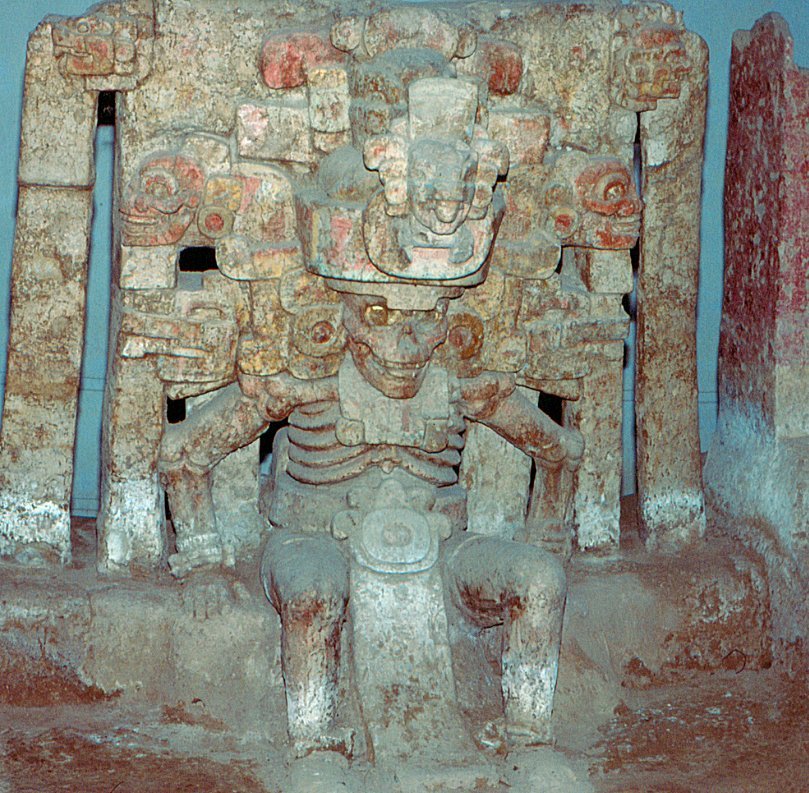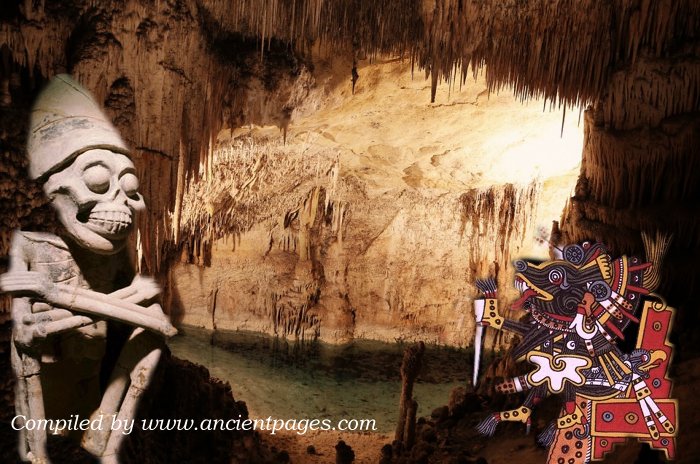Mictlan – Underworld Realm Of The Dead In Ancient Aztec Beliefs
A. Sutherland - AncientPages.com - In Aztec and Maya mythology, the Underworld (Xibalba for the Maya and Mictlan for the Aztecs) played an important role. In the beliefs of these ancient people, death was closely incorporated into the world of the living, and death is evident in almost every aspect of Aztec and Maya thought, culture, and tradition.
Statue of Mictlantecuhtli, El Zapotal, Veracruz, Mexique. Image via Wikipedia
The Aztec and Mayan mythologies describe what will happen to the spirit once the individual has died.
It was believed that the souls of ordinary people went to an underworld called Mictlan – the place of the dead. Each soul wandered through the layers of Mictlan until it reached the deepest level.
The Maya's Xibalba and the Aztec's Mictlan (or even the Norse place of the dead (Niflheim), symbolized a realm where violations of religious and moral rules were punished. These punishments included not only physical torture (often involving fire, walking upside down, eating excrement, and drinking urine) but also the agony of being cut off from God.
Statue of Mictlantecuhtli, lord of the Mictlan. Image credit: Musée du Templo Mayor, Mexico.
It is interesting how the Aztecs imagined the Mictlan.
Vision Of Mictlan
The Underworld of Aztec mythology, Mictlan (or Chiconauhmictlán), has been described as a "vast place, very dark place that has no windows light." It also has other names like Ximoayan, a place "where are the fleshless," or Atlecalocan, "without exit to the street."
According to the ancient beliefs of the Aztec people, at the time of death, the individual had to make the trip back to the maternal womb, to its place of origin. That's why the deceased was placed in a fetal position, and their soul had to undertake the trip to Mictlan and cross nine hazards and dangers, as it happened inside the womb during the nine lost menstrual periods and the nine-month-long pregnancy.
For the Aztecs, the world of the afterlife was arranged in 13 layers of the heavens and nine of the Underworld. The fate of the deceased was determined based on how this person died. A belief that, in some ways, reminds of the Norse Valhalla.
Most of those who died violent deaths entered the heavenly realm; one of the layers in heaven was reserved for sacrificial victims, those who perished in combat, and for women who died in childbirth (who were recognized as warriors who fell to the battling infant).
Another place was reserved for those who committed suicide. According to Aztec beliefs, yet another heavenly realm was reserved for those who drowned; it became an offer of deadly decease sent by the rain gods and even those struck by lightning.
Many Hard Challenges To Face
Most people who died of ordinary death entered Mictlan, the Underworld, and there, they had to face many trials like their Maya counterparts did when they entered Xibalba.
The journey from the first level to the ninth was four years long and arduous. The dead had to face several dangerous challenges, such as crossing a path full of snakes and challenging an area with strong winds that were so sharp they sliced at the skin like a knife, and the only protection from these terrible winds was a blanket buried with the dead.
Another test was to go through two mountains that collide with each other whenever a spirit passed between, in an attempt to crush the soul. Another challenge was to cross a river of blood with fearsome jaguars, and it was terrifying to encounter frightening demons that ate human hearts.
The Xolotl (a dog associated with this deity) accompanied the deceased. Like the Greek Charon and the Egyptian God Anubis, Xolotl also led the souls on their journey to the Underworld.
After four years of passing these roads, the deceased had ended the wandering and could finally cross a large, plentiful river mounted on his dog.
The exhausting journey was over. The deceased reached the Mictlan and could approach Mictlantecutli (Lord of death) and his wife, Mictecacihuatl (Lady of death), who ruled the Land of the Dead.
Mictlantecuhtli was a terrifying figure. In his "Encyclopedia of the Rulers Evil Spirits and Geographies of the Dead," Ernest L. Abel writes:
"Mictlantecuhtli had an insatiable hunger for human flesh and blood. He was a blood-splattered, partially de-fleshed skeleton with a menacing grin who wore a headdress with owl feathers, a necklace of human eyeballs, a human bone for an earplug, and had claws for hands in which he carried a knife or axe to remove the hearts of those he claimed. He was accompanied by animals such as the bat, centipede, owl, scorpion, and spider…"
Certain animals played an essential role in the Aztec beliefs. Bats symbolize death since they live inside the caves and only come out at night. Also, lizards and snakes were associated with death, and they accompanied the dead on the way to Mictlan.
The dog also connected with death, but this animal beneficially helped the deceased through many dangers in the Underworld.
Written by – A. Sutherland AncientPages.com Senior Staff Writer
Updated on February 17, 2024
Copyright © AncientPages.com All rights reserved. This material may not be published, broadcast, rewritten or redistributed in whole or part without the express written permission of AncientPages.com
Expand for referencesReferences:
Austin A. L. The Human Body and Ideology: Concepts of the Ancient Nahuas
Hayes B. Aztec Mythology
More From Ancient Pages
-
 Mayan Maize God And Ancient City Of El Mirador
Featured Stories | Apr 25, 2019
Mayan Maize God And Ancient City Of El Mirador
Featured Stories | Apr 25, 2019 -
 Ancient Egyptian Toys And Games In Focus
Featured Stories | Jan 15, 2016
Ancient Egyptian Toys And Games In Focus
Featured Stories | Jan 15, 2016 -
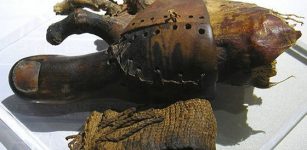 Prehistoric Evidence Of Sophisticated Prosthetics In Ancient Egypt – Artificial Toes Helped Egyptians Walk
Archaeology | Feb 20, 2014
Prehistoric Evidence Of Sophisticated Prosthetics In Ancient Egypt – Artificial Toes Helped Egyptians Walk
Archaeology | Feb 20, 2014 -
 The Battle Of Anghiari – Lost Painting Of Leonardo Da Vinci – One Of Art History’s Greatest Mysteries
Artifacts | Jan 24, 2018
The Battle Of Anghiari – Lost Painting Of Leonardo Da Vinci – One Of Art History’s Greatest Mysteries
Artifacts | Jan 24, 2018 -
 Huge Viking Burial Discovered Beneath Streets Of Dublin
Archaeology | Aug 6, 2014
Huge Viking Burial Discovered Beneath Streets Of Dublin
Archaeology | Aug 6, 2014 -
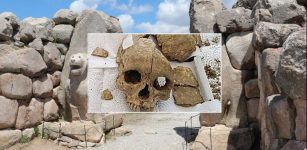 3,500-Year-Old Skull And Thighbone Discovered In Sapinuwa Antique City Of Central Anatolia
Archaeology | Dec 3, 2019
3,500-Year-Old Skull And Thighbone Discovered In Sapinuwa Antique City Of Central Anatolia
Archaeology | Dec 3, 2019 -
 Unique Ancient Roman Boxing Gloves Discovered Near Hadrian’s Wall – The Only Surviving Example From 120 A.D.
Archaeology | Feb 20, 2018
Unique Ancient Roman Boxing Gloves Discovered Near Hadrian’s Wall – The Only Surviving Example From 120 A.D.
Archaeology | Feb 20, 2018 -
 8,000-Year-Old House Remains Discovered In Svinjarička Čuka, Serbia Raise Questions About Europe’s First Farmers
Archaeology | Oct 21, 2024
8,000-Year-Old House Remains Discovered In Svinjarička Čuka, Serbia Raise Questions About Europe’s First Farmers
Archaeology | Oct 21, 2024 -
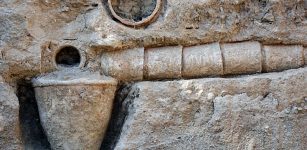 Ancient Aqueduct System Discovered In Boroujerd, Lorestan
News | Sep 16, 2015
Ancient Aqueduct System Discovered In Boroujerd, Lorestan
News | Sep 16, 2015 -
 Surprising Discovery In Valsgärde Viking Boat Graves – Scandinavian’s Oldest Down Bedding Found
Archaeology | Mar 27, 2021
Surprising Discovery In Valsgärde Viking Boat Graves – Scandinavian’s Oldest Down Bedding Found
Archaeology | Mar 27, 2021 -
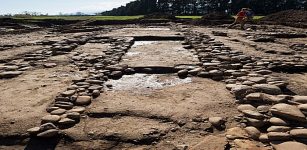 Sanctuary Of God Mithra And His Mysterious Religion Unearthed In Corsica
Archaeology | Mar 2, 2017
Sanctuary Of God Mithra And His Mysterious Religion Unearthed In Corsica
Archaeology | Mar 2, 2017 -
 Impressive And Rare Hoard Of Silver Coins Dated To The Hasmonean Period (126 BC) – Studied
Archaeology | Oct 14, 2021
Impressive And Rare Hoard Of Silver Coins Dated To The Hasmonean Period (126 BC) – Studied
Archaeology | Oct 14, 2021 -
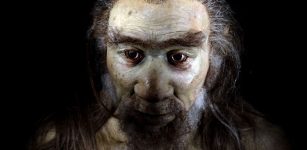 Modern Humans Carrying The Neanderthal Variant Have Less Protection Against Oxidative Stress
Archaeology | Jan 6, 2022
Modern Humans Carrying The Neanderthal Variant Have Less Protection Against Oxidative Stress
Archaeology | Jan 6, 2022 -
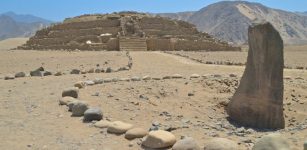 Astronomically Aligned Pyramidal Buildings Of America’s Oldest City Reveal How Its Builders Apprehended Space And Time
Archaeology | Apr 15, 2021
Astronomically Aligned Pyramidal Buildings Of America’s Oldest City Reveal How Its Builders Apprehended Space And Time
Archaeology | Apr 15, 2021 -
 Unique Seal Stamp That Belonged To Elisabeth Buggesdatter, One Of The Most Powerful Women In Denmark – Discovered
Archaeology | Dec 19, 2018
Unique Seal Stamp That Belonged To Elisabeth Buggesdatter, One Of The Most Powerful Women In Denmark – Discovered
Archaeology | Dec 19, 2018 -
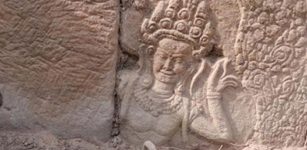 Apsara Carvings Dated To 12th Century Uncovered At Takav Gate In Angkor, Cambodia
Archaeology | May 5, 2022
Apsara Carvings Dated To 12th Century Uncovered At Takav Gate In Angkor, Cambodia
Archaeology | May 5, 2022 -
 Unique 3,000-Year-Old Logboat Found In River Tay – On Display In Perth, Scotland Again
Archaeology | Oct 30, 2023
Unique 3,000-Year-Old Logboat Found In River Tay – On Display In Perth, Scotland Again
Archaeology | Oct 30, 2023 -
 Hiidenkirnut: Spectacular Millennia-Old Devil’s Churns In Finland
Featured Stories | Jan 16, 2017
Hiidenkirnut: Spectacular Millennia-Old Devil’s Churns In Finland
Featured Stories | Jan 16, 2017 -
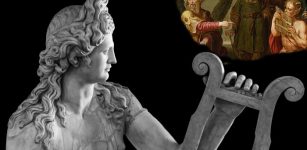 Apollo Punished Rivals For Their Extraordinary Musical Skills
Featured Stories | Apr 19, 2022
Apollo Punished Rivals For Their Extraordinary Musical Skills
Featured Stories | Apr 19, 2022 -
 On This Day In History: Twelfth Council Of Toledo Initiated By King Erwig – On Jan 9, 681
News | Jan 9, 2017
On This Day In History: Twelfth Council Of Toledo Initiated By King Erwig – On Jan 9, 681
News | Jan 9, 2017

